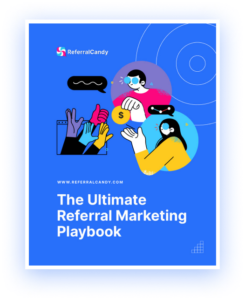Listen, we get it: building a digital media marketing strategy from scratch is anything but easy.
As a small business owner, you probably spend most of your day focused on just keeping the store running. There’s a good chance that digital marketing isn’t a high priority on your daily to-do list.
But if you want to increase sales, create a more cohesive online presence, and increase traffic to your store, it’s absolutely essential that you build this marketing strategy properly.
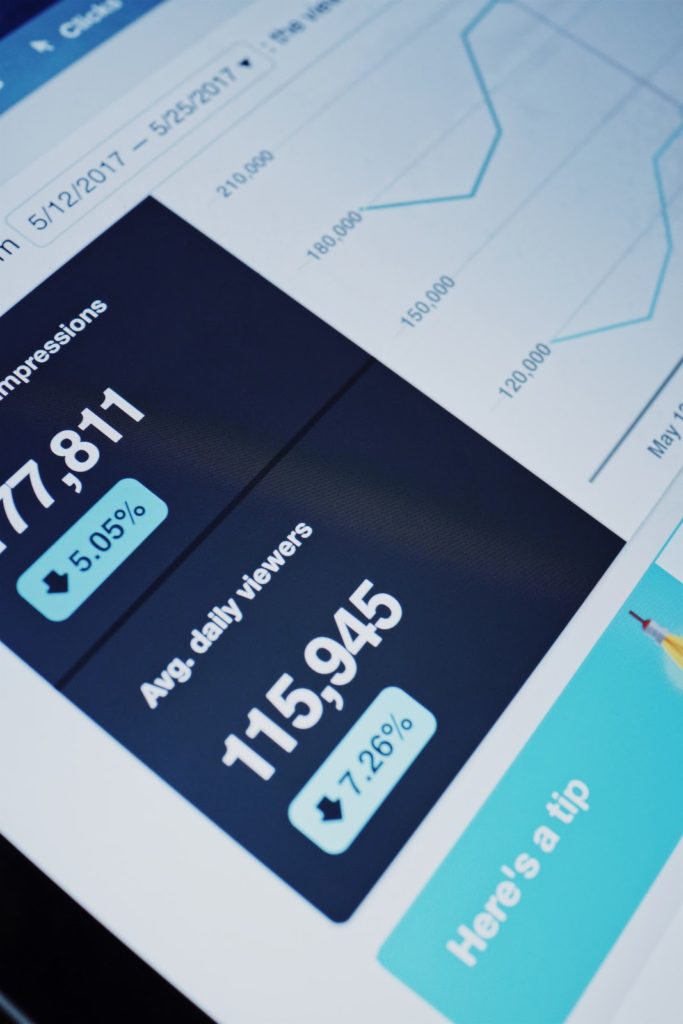
That’s why today, we’re going to cover the three building blocks that make up any successful digital marketing strategy.
By the time you’re done here, you’ll not only know what tactics to use, but you’ll have the marketing know-how to understand why they work.
Sound good? Let’s dive right in with one of the most critical aspects of your marketing strategy: your approach to mobile & desktop marketing.
Mobile & Desktop Marketing
Before you can build an effective digital media marketing strategy, you first need to understand what drives engagement online.
If you want people to trust and visit your store, you’ll need to show them what makes your small business so special.
At its core, your digital media marketing strategy is going to break down into three components:
- Your ability to raise brand awareness
- Your capacity for turning that awareness into traffic
- Turning that traffic into conversions
At its most basic level, your marketing strategy needs to accomplish all of this, as efficiently and consistently as possible.
The foundation of that marketing strategy should be your mobile/desktop marketing efforts.
Now, it’s important to notice that we mentioned both mobile and desktop. For whatever reason, the digital marketing community seems to have a running argument about which one is better.
 While it’s definitely worth investing more resources into the approach that gets you the best results, the reality is that mobile and desktop marketing are just two sides of the same coin.
While it’s definitely worth investing more resources into the approach that gets you the best results, the reality is that mobile and desktop marketing are just two sides of the same coin.
These days, most modern consumers are shopping and interacting with businesses across several devices.
Before the average shopper has walked through your doors, they’ll have likely already looked your small business up on social media.
In fact, the idea of focusing solely on desktop or mobile has meant missing out on as much as 50.3% of all ecommerce traffic since 2014, according to Shopify.
It doesn’t matter how successful your ecommerce strategy is — no business can afford to alienate 50.3% of their paying customers by not supporting their shopping method of choice.
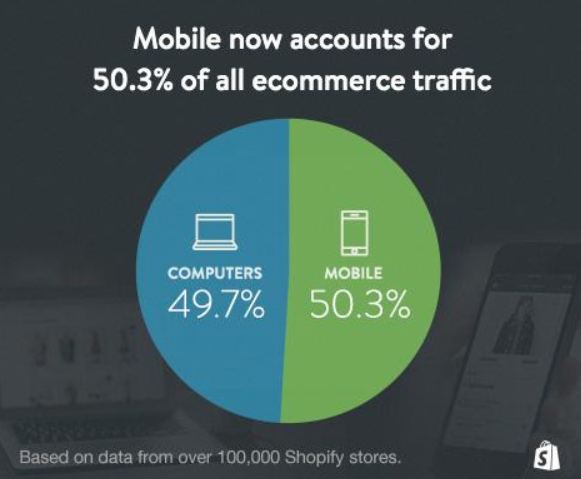
Which brings us to the next logical step: figuring out how to build compelling mobile/desktop marketing strategies.
There are a few common threads that run between the two, of course.
When it comes to driving traffic, they both rely on your content marketing and paid advertising efforts to bridge the gap between visibility and engagement.
Having a well-built user interface (UI) is crucial if you want to ensure you’re providing a positive user experience (more on that later).
But if you take a closer look at the mobile and desktop marketing landscapes, you’ll quickly see how important it is to optimize your site for both experiences if you want to maximize your conversion rate.
Desktop Marketing
If we had to describe what makes desktop marketing unique in a single word, it would be ‘capacity’.
 Desktop marketing gives you plenty of opportunities to enrich the user experience. Something as simple as having a bigger screen than any mobile device gives you a significant amount of freedom when determining your site design.
Desktop marketing gives you plenty of opportunities to enrich the user experience. Something as simple as having a bigger screen than any mobile device gives you a significant amount of freedom when determining your site design.
Beyond that, access to faster processors and more bandwidth means that you can afford to load more complex pages than you ever could on a smartphone.
Even something as simple as being able to implement a ‘hover’ drop-down menu is out of the question on a mobile device.
Where desktop shines is by allowing you to showcase elegant web design while providing features that consumers simply can’t find on mobile.
All of this may seem a bit complex, so here’s the most important thing to keep in mind:
If you want to drive conversions here, your site’s ease of use is going to play a massive role in whether or not your audience is engaged.
People don’t want to waste time on sites/pages that don’t load. The data doesn’t lie: slower load times lead to page abandonment, so make sure that you don’t test your user’s patience and be sure to check your page load times.
Mobile Marketing
If desktop marketing is defined by having a high capacity for features and content, mobile marketing is all about efficiency.

Let’s face it: you’re dealing with a much smaller screen, attached to a weaker processor and slower internet.
If you’re going to make this work, you’re going to need to prioritize speed at every turn. And one of the first steps you should take to do that is to check if your site is ‘mobile-friendly’.
Back in mid-2017, Google announced that they’d officially start prioritizing sites that qualified as mobile-friendly on their search engine results pages (SERPs).
In other words, if you and another site had the same rank but their site was mobile-friendly, they would end up above you.
There was a bit of a panic, with business owners scrambling to pass Google’s mobile-friendly test (which you can take here) and avoid getting left behind.
(Editor’s note: A helpful reader shared a better Responsive Checker tool, which allows you to visualise and scroll your page as on mobile).
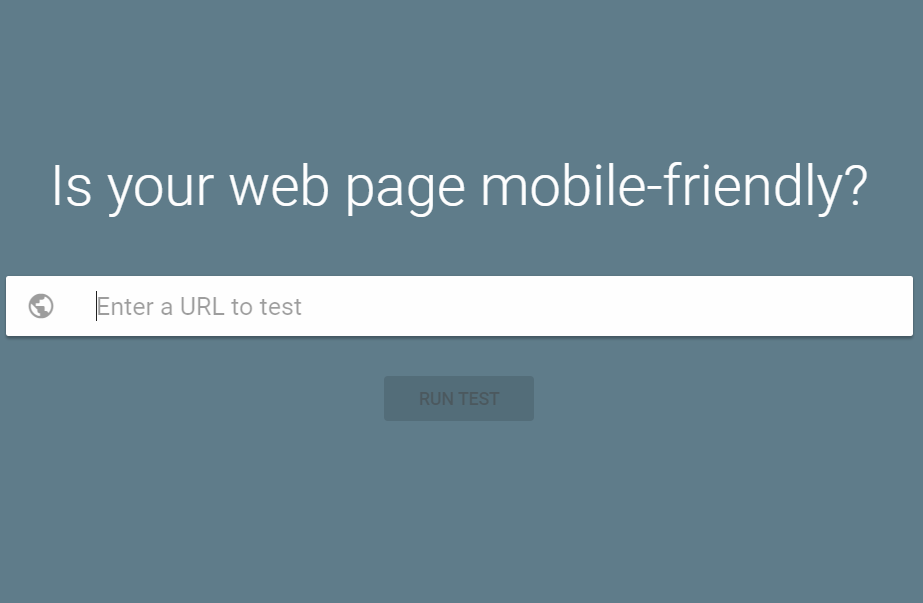 But the truth is that Google’s SERP ranking is the least of your problems if you don’t pass this test.
But the truth is that Google’s SERP ranking is the least of your problems if you don’t pass this test.
Sure, it’s not great to miss out on search engine traffic, but think about why Google did this in the first place.
Google is in the business of providing their users with valuable resources to solve their problems.
If a potential customer tries to load up a site that doesn’t qualify as mobile-friendly, there’s a good chance they’re not going to end up with the solution they wanted.
Slow load times and poor bandwidth means if you want the average mobile consumer to stick around, you’ll need to serve their needs just as much as you do for desktop consumers.
Business owners looking to increase their sales should focus on optimizing their desktop and mobile experiences for users, if they hope to take advantage of digital marketing.
And speaking of ecosystems, let’s talk about what community building looks like within the digital media marketing world.
Community Building
The concept of building a community is hardly anything new.
And to be clear, an audience and a community aren’t the same thing.
An audience consists of consumers who match your buyer personas, fit into your target demographic and have shown some level of interest in your business.

But a community is so much more.
All you have to do is look at a company like Apple and you’ll understand how powerful it can be to turn an audience into a community.

Communities are invested in your brand, and as long as your execution lines up with your brand voice, they’re likely to become repeat customers and product evangelists.
And the best part? These days, businesses don’t have to wait around and hope that their TV ad was compelling enough to foster a loyal fanbase.
Instead, they can produce content on a consistent basis and then create an ecosystem that nurtures the relationship between business and consumers.
This leads us into two major components of driving conversions in the digital media marketing space: content creation and social media marketing.

Before you can start leveraging those 1-to-1 interactions, you’ll need to create content that offers value to consumers.
What does ‘value’ look like? The easiest way of thinking about it is to view valuable content through two lenses: educational or entertaining.
There are varying styles of those two, of course. But this is the foundation that you’ll want to build if you expect to turn your audience into your community.
From there, your interactions on social media will determine whether or not you’re able to successfully get consumers invested in your brand.
 And to be clear, this goes beyond just posting consistently on social. When people comment on your posts or they message you, you answer. Every time.
And to be clear, this goes beyond just posting consistently on social. When people comment on your posts or they message you, you answer. Every time.
It’s really a win-win situation for you. If they’re praising you, you get to highlight one of your positives and reward engagement with acknowledgment.
If they’re complaining about something going wrong, you’re able to show the rest of your followers that you care about your customer’s experiences.
See? Win-win.
If you want to go above and beyond, identify the existing communities your audience pays attention to (like Facebook Groups) and chime in.
 A word of warning here — if you try to use those community spaces as a place to shamelessly self-promote, not only will you probably be banned, but you’ll convince a portion of your audience that you care more about profits than customers.
A word of warning here — if you try to use those community spaces as a place to shamelessly self-promote, not only will you probably be banned, but you’ll convince a portion of your audience that you care more about profits than customers.
When you find these community spaces on platforms like Facebook and Reddit, find ways to contribute to the conversation. Genuinely answer questions that members have, even if they don’t immediately serve your interests.
 Rest assured that when it’s appropriate, you’ll be able to recommend your business. But the goal of this tactic is primarily to develop your reputation as an online authority, which will then increase traffic to your actual store.
Rest assured that when it’s appropriate, you’ll be able to recommend your business. But the goal of this tactic is primarily to develop your reputation as an online authority, which will then increase traffic to your actual store.
User Experience
When we talk about conversions, we’re usually talking about sales. The only real difference is that conversions work best as an umbrella term for convincing prospects to engage with your business in a specific way.
Whether that conversion was a sale of a product or an email list sign up in exchange for a free ebook, the conversion follows the rules that a sale does.
So, to understand why providing a positive user experience is key to building a digital media marketing strategy for your business
In the interest of keeping things simple, we’re going to view the consumer sales journey as three general sections:
- Customer Awareness
- Customer Consideration
- Customer Conversion
Each one of these steps has a variety of different components, but their combined success relies on the same overarching issue: reducing friction at every step in the sales journey.
When we look at friction through the lens of digital media marketing, there’s really only one place worth focusing on — your site.
 Reducing friction on your site means auditing your site and not only finding out where you’re losing customers, but why you’re losing them.
Reducing friction on your site means auditing your site and not only finding out where you’re losing customers, but why you’re losing them.
Something as simple as flawed copy can have an impact on your conversion rate.
Avoid trying to ‘sound smart’. Never use ten words when five will do.
Copy is a conversation. You should keep the focus on how to solve the customer’s specific problems and off your business’s achievements.
How often are you including calls to action (CTA)? Are they crystal clear and easy to follow, or are they vague and generalized?
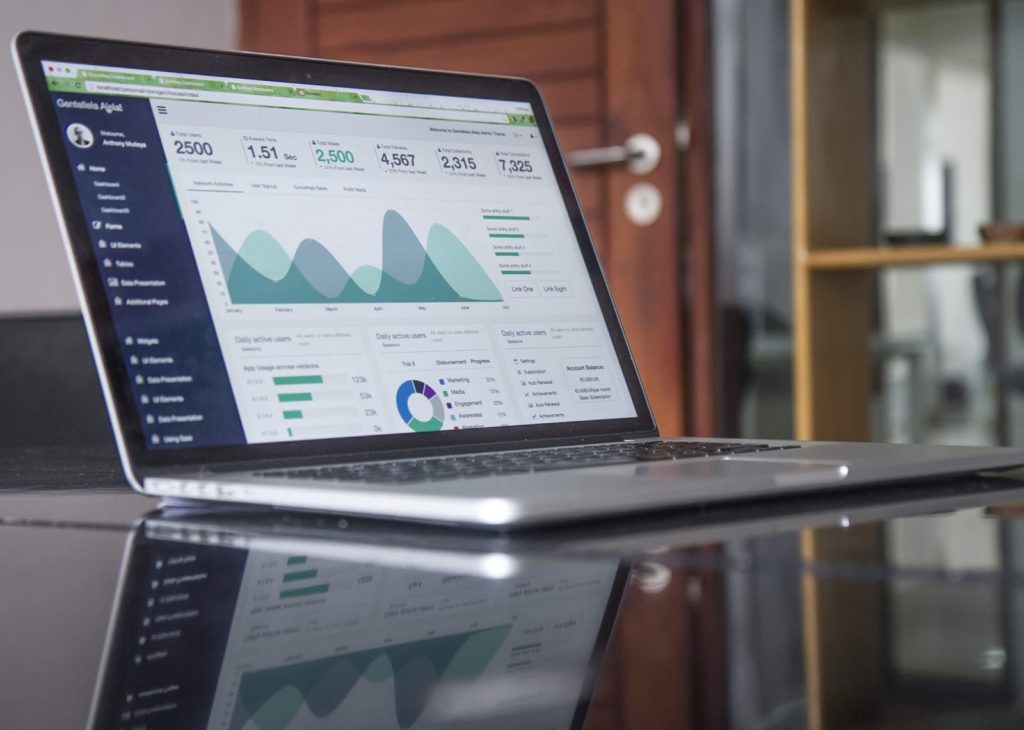 Your site’s design can also be ruining your conversion rate, with inconsistencies and slow load times being a common issue when it comes to page abandonment.
Your site’s design can also be ruining your conversion rate, with inconsistencies and slow load times being a common issue when it comes to page abandonment.
Does your site have a natural, intuitive progression or is it a mess, filled with too many options and no clear direction?
Even one of these can add a significant amount of friction to your site, compromising your conversion rate in the process.
Conclusion
If you’re trying to build an effective digital media marketing strategy, you’re going to need a methodical approach to driving conversions.
The first step in that process is making sure that these three components are addressed and tweaked to perfection throughout your marketing campaign.
Learn to balance mobile and desktop marketing, taking advantage of each to ensure that every one of your customers is having their user experience considered.
Leverage the power of social media and content marketing to build a loyal community out of your audience, to drive repeat business. Initial conversions are great, but turning customers into repeat customers is even better.
Pay attention to your site and whether or not it’s serving the user experience. Friction is the silent killer of conversions, and you owe it to yourself and your customers to improve the user experience.
In fact, if you’re looking to improve your user experience and drive repeat business at the same time, your best bet is to sign up for CandyBar free for 30 days. Our digital loyalty cards are easy to integrate into your business, and they’ll elevate your user experience in a way that your competitors simply can’t compete with.


